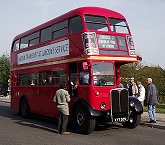
Brooklands Bus Running DaySunday 23rd October 2011Prepared by Ian Smith, 25th October 2011BrooklandsThe operations yardJust outside the entrance to Brooklands Museum was the small pad being used to park operating buses: non-Museum buses that were being used by the Museum to provide the Running Day aspect of the day. Sparkling in the sunshine was RT2083, set up to work on one of the 462 variants, the 462C between Chertsey and Ottershaw. Just behind was RM357, which was to work on the 131.Also parked there were several of the red RFs being used to work on the 219, 237 and 264 routes in the vicinity. Here were RF354, RF486, RF326 and RF429. Green Line RF226 had arrived too, and then came RLH48, immaculate as always, working on the 462.
Best of London Buses ExhibitionI crossed the moat to the entrance shed, and bought my day-glo bracelet for the day, in order to go in.In the yard stood three of the oldest buses of the day, two from Mike Sutcliffes collection of restored Leylands: Chocolate Express XU7498 (1924) and Central X2 type LN7270 of 1908/1906 were both immaculate and amazing. Between them stood London General K424 (1921), out for the day from the London Transport Museum, and next along was repatriated and restored RT8 (1940). The RF family was represented by tours coach RFW14, now celebrating its 60th anniversary, and Green Line RF28. This, also 60 years old, had a major mid-life face-lift to become one of the "modernised" Green Line coaches, so does it count as a pensioner? GS34 was the youngest of this display - only 58! The Guy Special showed the best of 1950s thinking in small bus design. A midi-bus for the 1950s and 1960s. Just over the fence, where it could easily be extracted for passenger duties, was the immediate post-war acme of single-decker bus design, the 1948 Regal T792 - a single deck RT. Unusual members of the RT family were the low-height Regent IIIs - probably because the low-bridge bodies were not a London design, but a Weymann standard. London Transport did not approve of low-height buses, and neither did the Metropolitan Police. But the war had raised the need for them, and Chiswick had built some of its own on STL chassis. After the war there might have been a low-height RT, but a diverted order from Midland General brought the first RLHs, and London Transport bought more to replace its hotch-potch low-deck fleet. Today both Timebus' RLH23 and privately preserved RLH48 were here. Another off-standard type was the RTW. After tests with an 8ft wide test-body on a modified RT chassis London Transport ordered 500 of the wider buses from Leyland, who made a good job of emulating the RT body style. After a period in tram-free outer suburbs, at the insistence of the Police, trials were held in the City of London to demonstrate that 8ft wide buses were trouble-free even in the narrow City streets, and they quickly moved to the centre, paving the way for the 8ft wide Routemasters. RTW185 represented them here today. The ordinary width (7ft in) Leyland-powered members of the RT family were represented too, by RTL139 and RTL326. The RTs in the display also showed their variety: RT3254 is one of those built for Green Line services out of Romford. RT1705 was a Central Area bus, with a roofbox display. RT3183 is a typical member of the Country Area fleet. RT2043 is a Central Area standard bus, in the early livery. RT2296 showed the version that most people met most often: the red Central Area bus in the livery that the class wore for twenty years: red with a cream band and black mudguards (NOT all-red). RF146, on the other hand, wears a very short-lived London Transport livery: the Lincoln green with canary yellow relief worn briefly before (and after) the London Country nationalisation, around 1970. There were more Central Area RFs too, demonstrating various aspects of their class history. RF518 had started out as Central bus RF299, but had been renumbered to RF518 when the Green Line fleet was expanded in 1956. RF366 was always a Central bus, and survives in preservation without the entrance doors that most of the class acquired later. These two were having blinds fitted ready for forays later in the day. RF534 was a Country bus until 1956, when the Central Area complained about losing some of its RFs to Green Line. RF534, with others, became a Central Bus then in compensation, and ran for a while still in green and with (unused) doors. Towards the end of its LT career it worked at Kingston. Some of the Kingston RFs were given a late overhaul to keep them going a little longer, and received a livery with white trim and a white bullseye, as worn now by RF534. I left the Best of London Buses display and walked off to see the separate Routemaster offering... Part 4: Routemasters and an RF.All photos by Ian Smith. Click on any of them for a larger picture.
|

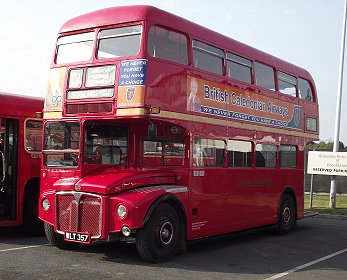
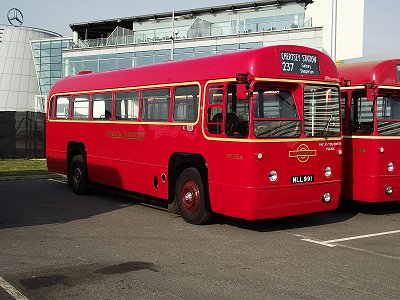
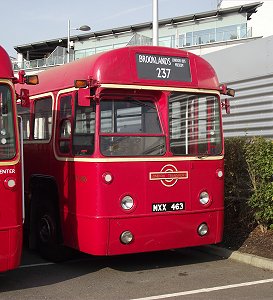

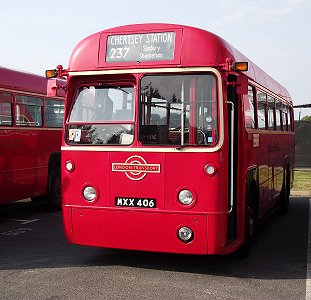
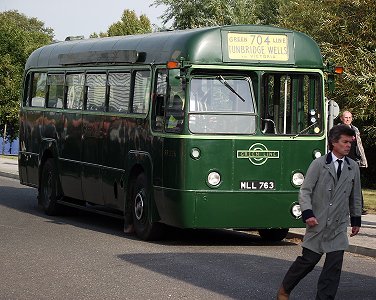
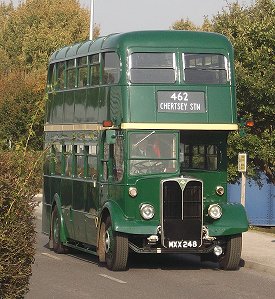
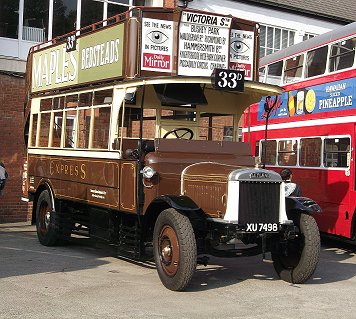
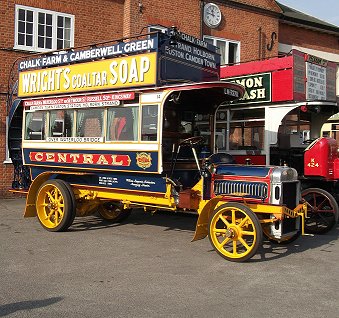


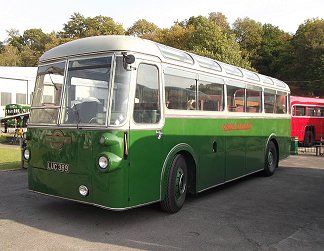
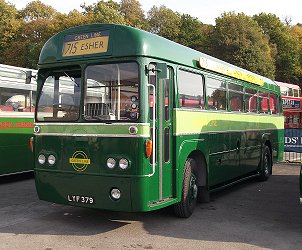
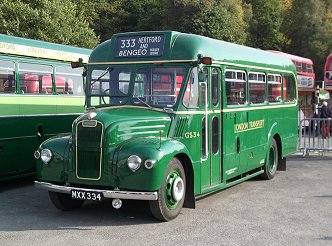
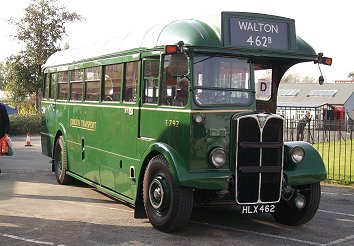
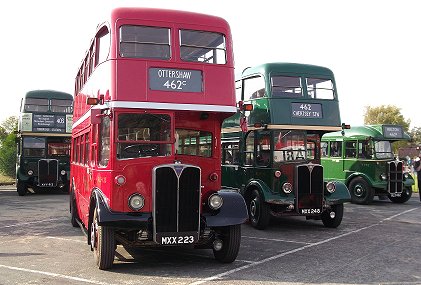
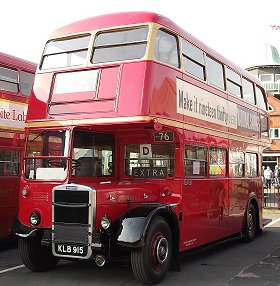
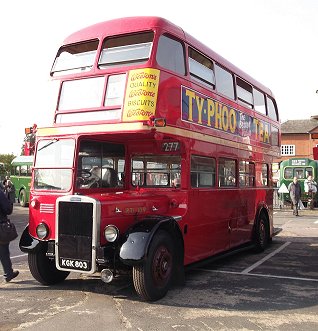
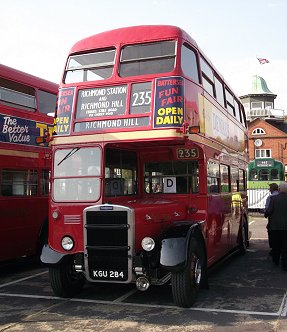
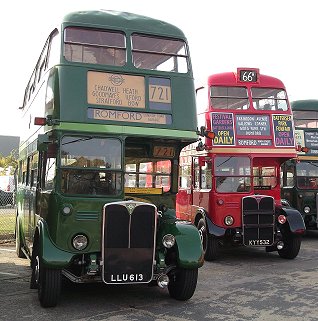
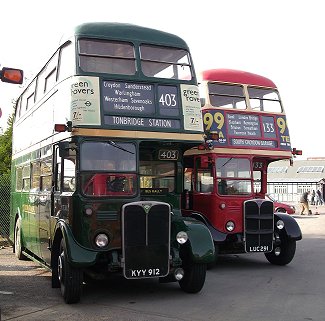
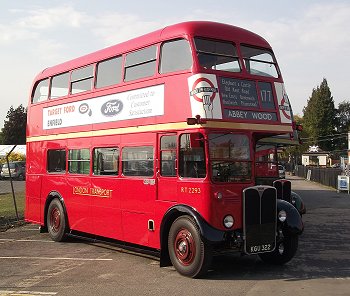
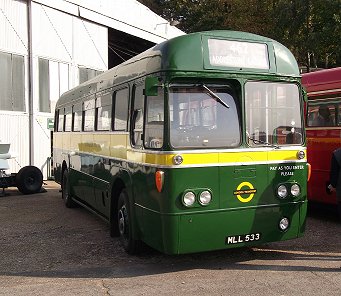
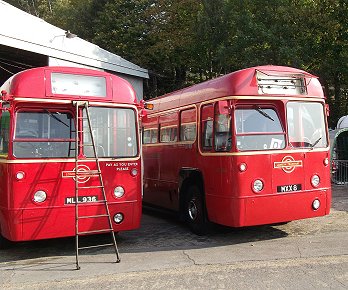

 Ian's Bus-stop
Ian's Bus-stop Part 1
Part 1 Part 2
Part 2 Part 3
Part 3 Part 4
Part 4